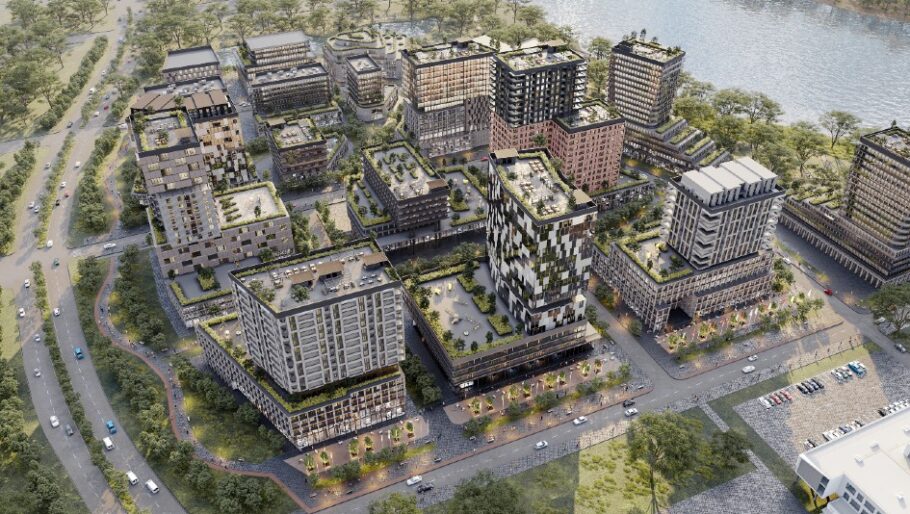Winnipeg’s largest and most sustainable infill development, Southwood Circle, started taking shape this week. Indigenous design principles are guiding the 80-acre project, which is set to become one of the most densely populated neighbourhoods in the city and home to more than 20,000 people.
The walkable, bike-friendly community will feature about 10 kilometers of new active transportation pathways. The entire neighbourhood will be steps from the rapid transit station at the University of Manitoba. Housing options range from affordable rentals to luxury condominiums. More than 12 million square feet of new residential, commercial and institutional space is in the works.
As Manitoba’s first complete campus community, the project is expected transform the University of Manitoba campus into a world-leading “UniverCity” where 60,000 people will live, work, study or play.
“Southwood Circle is part of a transformation of the 110-year-old Fort Garry campus from a daytime commuter destination to a complete community,” said Michael Benarroch, President of the University of Manitoba. “This community answers the call for sustainable housing options. It will be a unique urban experience, distinct within Winnipeg. It will be rich in amenities. It will integrate the university with the surrounding community.”
Benarroch said he expects researchers from many university faculties will be excited for the opportunity to study the new community as it grows. Southwood Circle will create a Living Lab Research Consortium to which all of its developers will belong. Each developer will participate in data gathering, sharing and researching in various aspects of community development, from environmental and sociological impact to engineering and architectural design.
This will give faculty and student researchers the opportunity to collaborate with developers and each other on interdisciplinary research projects. The hope is that research results shared within and beyond the consortium members will help other communities achieve higher levels of sustainability and wellness.
“We have this unique opportunity to continuously improve energy, water and waste efficiency, and generate higher levels of overall wellness through applied science,” said Greg Rogers, CEO of UM Properties. “We cannot solve the problems of the world on these 80 acres but we can find new and better ways that can be shared and applied elsewhere to make an ever greater contribution to housing and environmental challenges.
The community has been planned with careful attention to Indigenous design. “We want this neighbourhood to be a place of wellness, happiness and community,” Rogers added. “And we want it to be a place of healing too with respect to relationships with Indigenous peoples.”
The future National Centre for Truth and Reconciliation will be located on the lands granted to the NCTR by the University of Manitoba. As well, the design team, including Anishinaabe architect Ryan Gorie, was tasked with envisioning a community that embraced nature and preserved the 5,000 trees presently located on the property, some as old as 300 years. The team created a 21-plus acre park network of existing forest for trails and wildlife corridors, twice the municipal requirement.
“One of our most important goals for Southwood Circle is for it to be a symbol of reconciliation in action,” said Bob Silver, Chair of UM Properties. “We’re immensely honoured that the National Centre for Truth and Reconciliation will be part the Southwood Circle community. And our planners have done an amazing job of giving it a place of prominence for residents and visitors.”
The name Southwood Circle arose through consultation with the Elders’ circle who suggested it include a reference to the circle of life.
“As we aspire for this community to be among the most sustainable ever built in Canada, it’s worth pausing to recognize that Indigenous peoples have embodied this way of living for centuries on this very spot,” added Silver. We are honoured that the local Indigenous nations have welcomed us in the development of the project on their traditional territories.”
UM Properties divided the land into parcels that it will lease to third party developers who will be responsible for building in accordance with UM Properties design guidelines. The first call for proposals went out in summer 2023 and construction on the first buildings is expected to begin in 2024.
The neighbourhood is expected to be home to more than 12 million square feet of new residential, commercial and institutional space representing more than $5 billion in private investment in today’s dollars.





